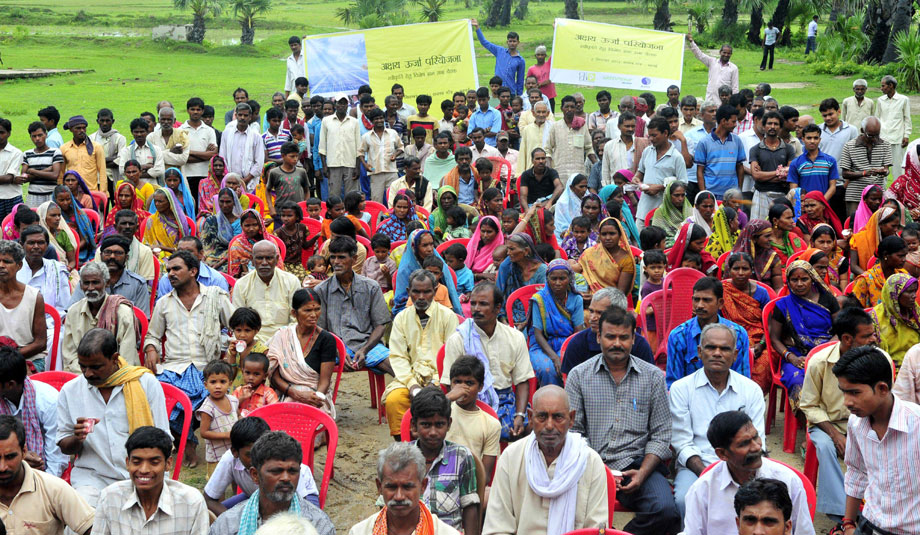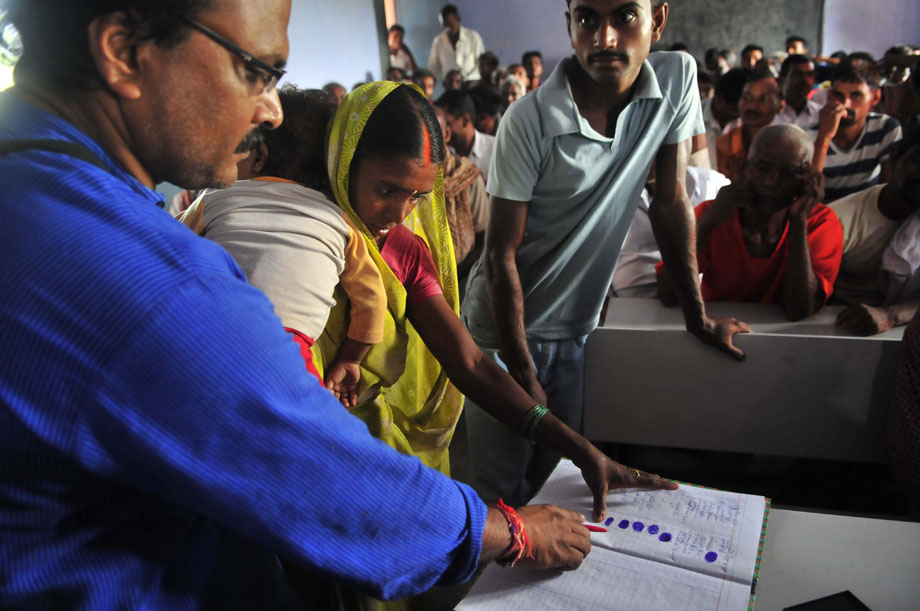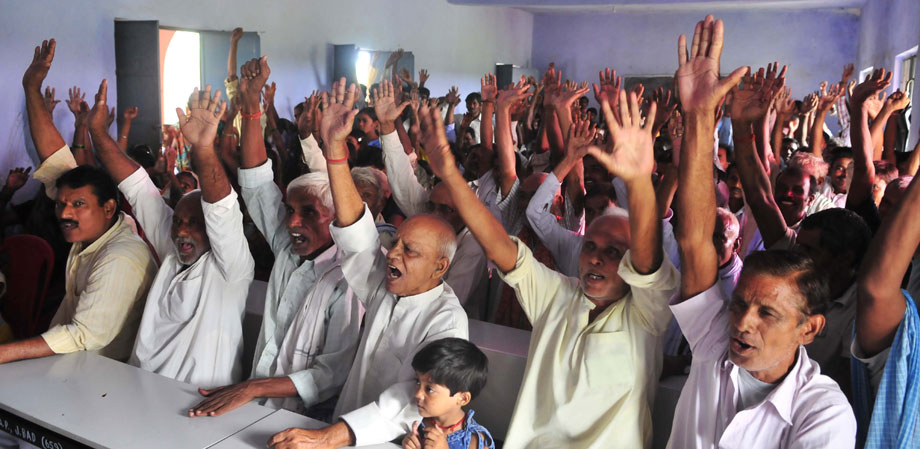Greenpeace Announces Revolutionary Electricity Model In Bihar
By Greenpeace India
04 September, 2013
Greenpeace India
The solar powered micro grid to be a self-sustainable model replicable across India

Villagers in Dharnai, Bihar at the Gram Sabha meet for the Bihar Rural Electrification Micro Grid Project give their 'go ahead' for the Rural Electrification Micro Grid Project.
Greenpeace today announced a one of its kind rural electrification model based on a smart micro grid in Dharnai village in Jehanabad district of Bihar. This ambitious solar powered micro-grid is being installed to showcase that the real solution for rural electrification lies in Decentralised Renewable Energy (DRE).
Co-implemented with BASIX and Centre for Environment and Energy Development, the micro grid will involve about 100 kilowatts of solar panels that will supply affordable, sustainable and round the clock electricity to 350 households in Dharnai. The micro grid is targeted to become operational by 2014.

Villagers in Dharnai give their official seal to the Rural Electrification Micro Grid Project.
Samit Aich, Executive Director of Greenpeace India says, “This decentralised energy delivery system is not just about a couple of lights and a fan for a few hours. It will be a game changer for rural electrification in India catering to the energy ambitions of the people and galvanizing the rural economy. This is the kind of infrastructure where the future of energy investment lies which will not only facilitate people’s access to modern energy resources but also in building infrastructure that will be owned and controlled by the people.”
Dharnai has been selected keeping in mind the socio economic profile, demography and accessibility of the village. The village was electrified previously, but has lost its electricity infrastructure and is currently dependent on unreliable and costly diesel generators. Though the village is predominantly an agricultural village, there are commercial establishments, shops, a bank and a few government buildings that run on diesel generators or batteries. The micro grid will also cater to their energy requirements.

Villagers are enthusiastic and welcome the installing of the Rural Electrification Micro Grid Project at the Gram Sabha meet in Dharnai
Mihir Sahana, Managing Director of BASIX India said, “This dynamic micro grid will benefit all sections of the society, removing inequity in energy access and putting Dharnai on the path to inclusive and far reaching growth. It will also empower people by allowing them a stake in their energy generation and distribution. The success of this unique model will also attract investors and push the government to improve the regulatory framework.”
At the onset of the project, Greenpeace demands that the Bihar government recognizes DRE as key to ensuring energy access and creates a regulatory structure to support it rather than investing into polluting coal and dangerous nuclear technologies.
Manish Ram, Energy Campaigner, Greenpeace India concludes, “In a meeting in 2012, Bihar Chief Minister Nitish Kumar had suggested that Greenpeace should display the viability of DRE and here we are with a model that can lead Bihar out of an endless energy crisis. We do hope that on the completion of the project the government will scale up and replicate the model at the state level and put Bihar on a novel but sustainable development path powered by clean energy.”
All Photos By
Prashant Ravi
Comments are moderated

